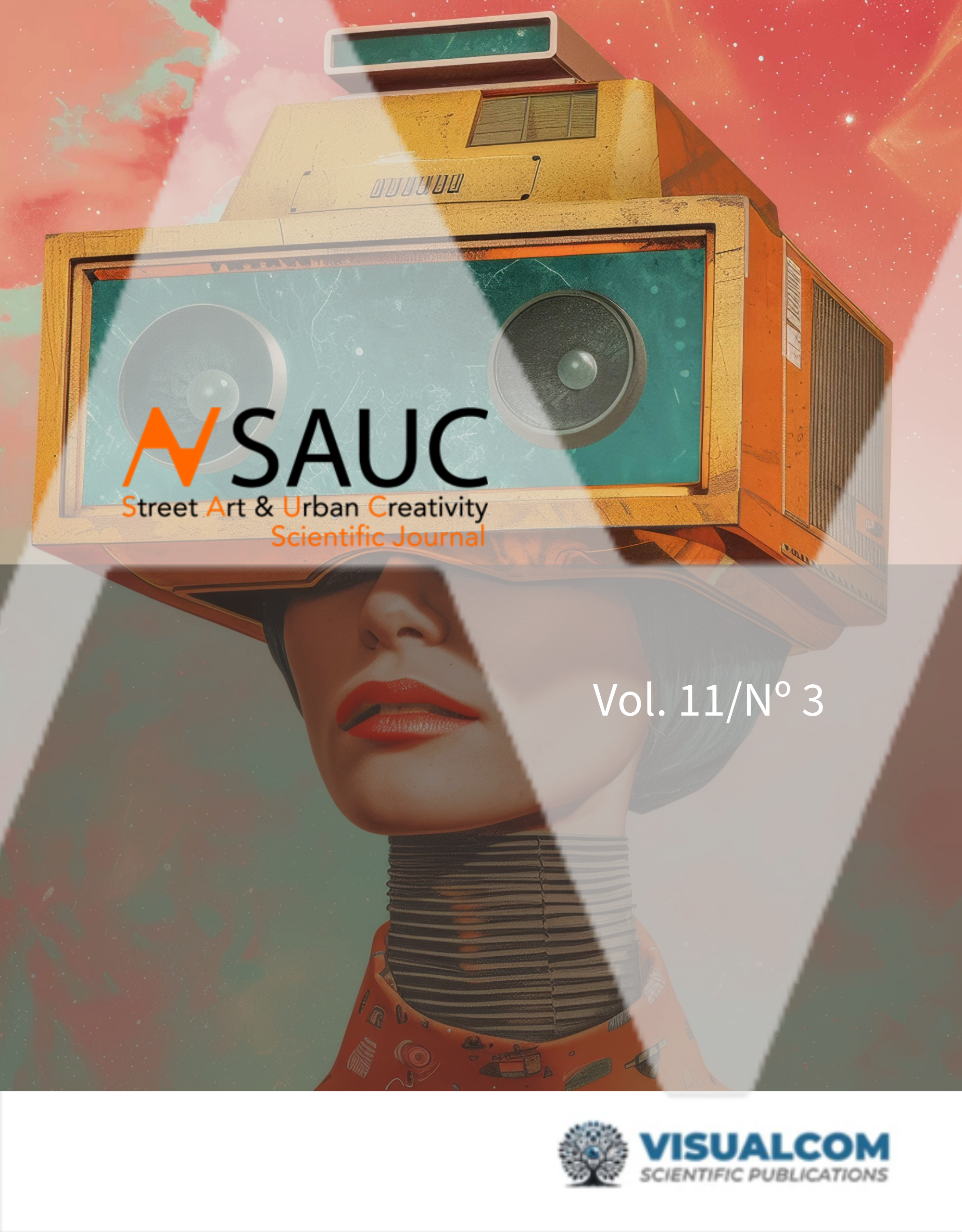Strengthening sustainable real estate management through citizen participation
DOI:
https://doi.org/10.62161/sauc.v11.5736Keywords:
Sustainable Development, Urban regeneration, Urban management, Real estate management, Citizen Participation, Participation actions, Urban ActorsAbstract
The growth of the city foresees that sustainable development and urban governance is important to identify urban actors framed in citizen participation processes. The public-private sector as promoters in the construction of the territory have maintained a biased vision towards the inclusion of social actors, without making visible the multiple enriching criteria for urban regeneration.
This article is part of a doctoral research, focusing its Hypothesis on new real estate management models that involve citizen participation. The methodology is based on the systematic review of scientific literature and the qualitative analysis of indicators that make visible actions to strengthen real estate management towards sustainable development.
The results show the importance of cooperation processes with indicators and actions that strengthen public-private collaboration. It is concluded that citizen participation contributes to sustainable development by strengthening urban and real estate management processes as an opportunity for participatory design in the territory.
Downloads
Global Statistics ℹ️
|
384
Views
|
234
Downloads
|
|
618
Total
|
|
References
Bi, C., & Little, J. C. (2022). Integrated assessment across building and urban scales: A review and proposal for a more holistic, multi-scale, system-of-systems approach. Sustainable Cities and Society, 82. https://doi.org/10.1016/j.scs.2022.103915 DOI: https://doi.org/10.1016/j.scs.2022.103915
Derbal, K., & Tachrift, A. (2022). Citizenship participation in local and urban planning in Algeria. Estudios Demograficos y Urbanos, 37(1), 121–157. https://doi.org/10.24201/edu.v37i1.1966 DOI: https://doi.org/10.24201/edu.v37i1.1966
González-Romero, G. (2020). La innovación social como estrategia de desarrollo. Políticas urbanas y acción colectiva. Teuken Bidikay - Revista Latinoamericana de Investigación En Organizaciones, Ambiente y Sociedad, 11(16), 29–54. https://doi.org/10.33571/teuken.v11n16a2 DOI: https://doi.org/10.33571/teuken.v11n16a2
Kurt Özman, E., & Taşan-Kok, T. (2024). From entrepreneurial to responsive spatial governance: Unveiling innovative strategies of self-organization in Istanbul. Cities, 151. https://doi.org/10.1016/j.cities.2024.105144 DOI: https://doi.org/10.1016/j.cities.2024.105144
Li, B., Katz, I., Fang, L., & Kumar, S. (2024). Social inclusion, social innovation, and urban governance. Urban Governance, 4(1), 1–2. https://doi.org/10.1016/j.ugj.2024.01.004 DOI: https://doi.org/10.1016/j.ugj.2024.01.004
Lin, Y. (2022). Social media for collaborative planning: A typology of support functions and challenges. Cities, 125. https://doi.org/10.1016/j.cities.2022.103641 DOI: https://doi.org/10.1016/j.cities.2022.103641
Mejia, G. (2024). URBAN STAKEHOLDERS AS KEY TO MANAGE MODELS FOR URBAN REGENERATION: CONTRIBUTION FROM SCIENTIFIC LITERATURE (2009-2022). Proceedings of International Structural Engineering and Construction, 11(1). https://doi.org/10.14455/ISEC.2024.11(1).AAE-05 DOI: https://doi.org/10.14455/ISEC.2024.11(1).AAE-05
Mejía Gómez, G., Cedeño Guerra, M., & Salvador Erazo, R. (2022). El mejoramiento de barrios como metodología aplicada para promover reactivación en la participación ciudadana y sostenibilidad por medio de los modelos de gestión en el Distrito Metropolitano de Quito. Cuadernos De Investigación Urbanística, 142, 96-115. https://doi.org/10.20868/ciur.2022.142.4889 DOI: https://doi.org/10.20868/ciur.2022.142.4889
Mondragón Pérez, A. R. (2002). ¿Qué son los indicadores? Revista de información y análisis, 19, 52-58.
Naciones Unidas. (2017). Nueva Agenda Urbana. Habitat III.
Pflughoeft, B. R., & Schneider, I. E. (2020). Social media as E-participation: Can a multiple hierarchy stratification perspective predict public interest? Government Information Quarterly, 37(1). https://doi.org/10.1016/j.giq.2019.101422 DOI: https://doi.org/10.1016/j.giq.2019.101422
Pontrandolfi, P., & Scorza, F. (2016). Sustainable urban regeneration policy making: Inclusive participation practice. Lecture Notes in Computer Science (Including Subseries Lecture Notes in Artificial Intelligence and Lecture Notes in Bioinformatics), 9788, 552–560. https://doi.org/10.1007/978-3-319-42111-7_44 DOI: https://doi.org/10.1007/978-3-319-42111-7_44
Roberts, P., & Sykes, H. (2000). Urban Regeneration A Handbook. Sage publications.
Toxopeus, H., Kotsila, P., Conde, M., Katona, A., van der Jagt, A. P. N., & Polzin, F. (2020). How ‘just’ is hybrid governance of urban nature-based solutions? Cities, 105. https://doi.org/10.1016/j.cities.2020.102839 DOI: https://doi.org/10.1016/j.cities.2020.102839
Wang, J., Li, G., Lu, H., & Wu, Z. (2024). Urban models: Progress and perspective. Sustainable Futures, 7. https://doi.org/10.1016/j.sftr.2024.100181 DOI: https://doi.org/10.1016/j.sftr.2024.100181
Downloads
Published
How to Cite
Issue
Section
License
Copyright (c) 2025 Authors retain copyright and transfer to the journal the right of first publication and publishing rights

This work is licensed under a Creative Commons Attribution-NoDerivatives 4.0 International License.
Those authors who publish in this journal accept the following terms:
-
Authors retain copyright.
-
Authors transfer to the journal the right of first publication. The journal also owns the publishing rights.
-
All published contents are governed by an Attribution-NoDerivatives 4.0 International License.
Access the informative version and legal text of the license. By virtue of this, third parties are allowed to use what is published as long as they mention the authorship of the work and the first publication in this journal. If you transform the material, you may not distribute the modified work. -
Authors may make other independent and additional contractual arrangements for non-exclusive distribution of the version of the article published in this journal (e.g., inclusion in an institutional repository or publication in a book) as long as they clearly indicate that the work was first published in this journal.
- Authors are allowed and recommended to publish their work on the Internet (for example on institutional and personal websites), following the publication of, and referencing the journal, as this could lead to constructive exchanges and a more extensive and quick circulation of published works (see The Effect of Open Access).













